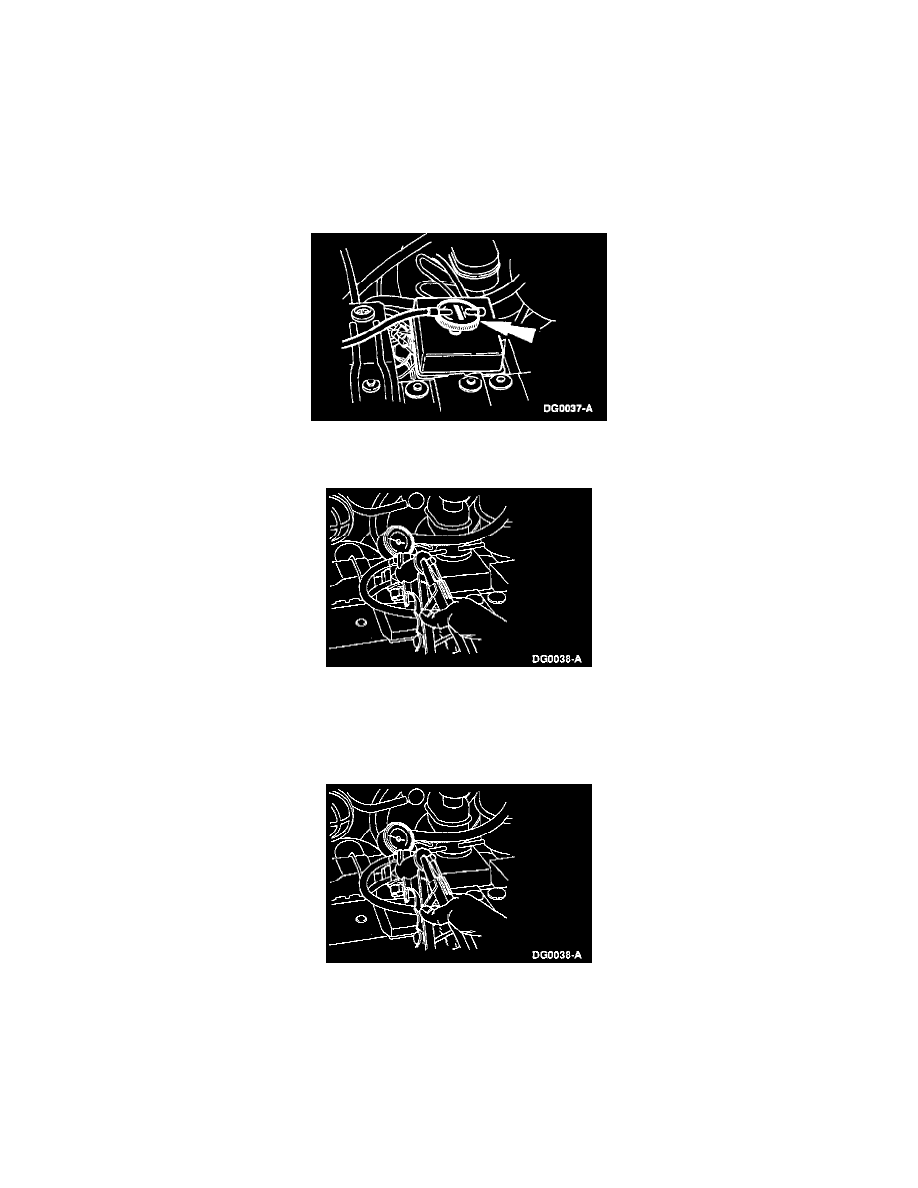E 350 1 Ton Van V10-6.8L VIN S (1997)

Power Steering Bleeding: Service and Repair
Purging
A whine heard from the power steering pump can be caused by air in the system. This procedure must be performed under the following conditions:
^
prior to any component repair in which power steering noise complaints are accompanied by evidence of aerated fluid
^
after replacement of any power steering system component (gear, hose, etc.)
NOTE: If the air is not purged from the power steering system correctly, pump failure can result. This condition can occur on pre-delivery vehicles
with evidence of aerated fluid, or on vehicles that have had steering component repair.
CAUTION: Do not hold the steering wheel against the stops for an extended period of time. Damage to the pump can occur.
1. Insert the rubber stopper of the air evacuator assembly tightly into the pump reservoir.
2. Start the vehicle.
3. Apply 68-85 kPa (20-25 in-Hg) maximum vacuum for a minimum of three minutes at idle.
^
Maintain maximum vacuum with source.
4. Release the vacuum and remove the vacuum source.
5. Add fluid to FULL COLD or auxiliary reservoir center mark.
6. Reinstall the vacuum source and apply 68-85 kPa (20-25 in-Hg) vacuum.
7. Cycle the steering wheel from stop to stop every 30 seconds for approximately 5 minutes.
CAUTION: Do not hold the steering wheel against the stops for an extended period of time. Damage to the pump can occur.
8. Stop the engine, release the vacuum and remove the vacuum source.
9. Add fluid if necessary. Install the dipstick cap.
10. Start the engine and cycle the steering wheel from stop to stop every 30 seconds for approximately 5 minutes.
11. Check for oil leaks at all connections. If the power steering fluid still shows signs of air, repeat procedure.
